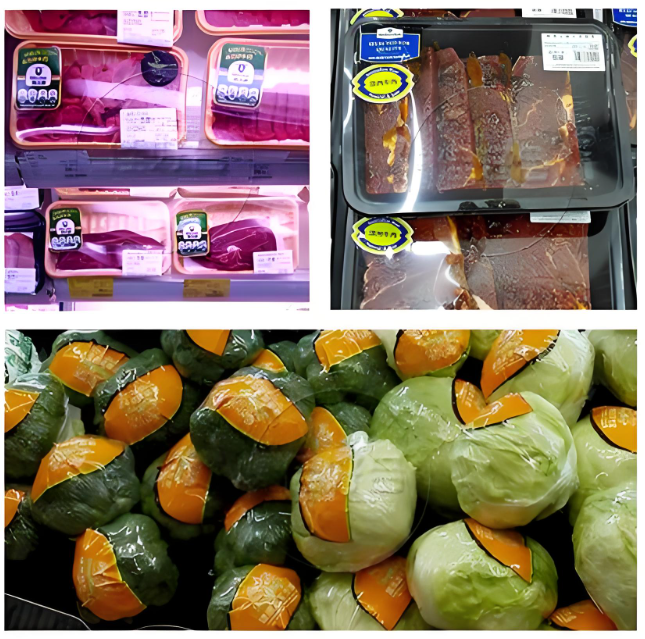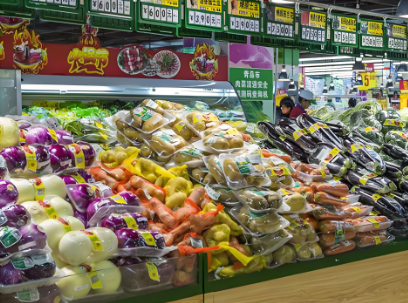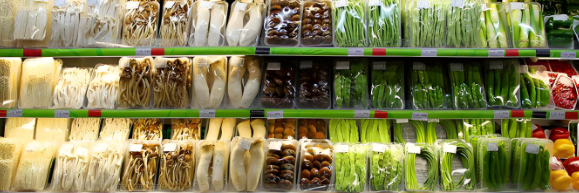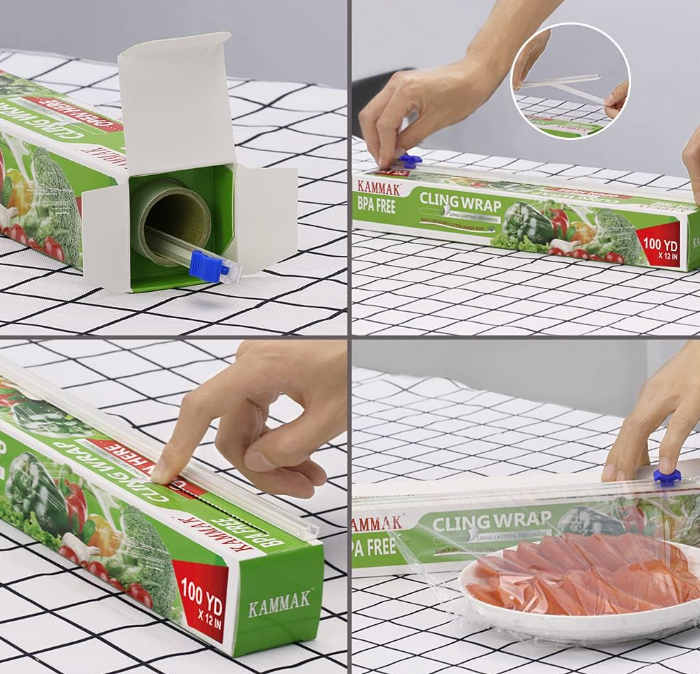Saran Wrap: The Ultimate in Protection in Retail Packaging
At a retail freezer, consumers often make their decision in just three seconds. They don't focus on the brand story but notice the clean, snug, fog-free film—the first impression of trust.
For brands involved in ready-to-eat and fresh produce retail, Saran Wrap is more than just packaging; it acts as a visual quality control tool.
In its work with retail brands, central kitchens, and convenience chains, MTPAK has observed that this transparent film is becoming a key element in maintaining freshness standards at the retail level.
Why does visual freshness determine retail competitiveness?
In ready-to-eat meal boxes, salads, and cut fruit, Saran Wrap serves more than just a dust and drying barrier; it also maintains a visual vibrancy. Gloss, color, and structural integrity determine whether consumers perceive a product as freshly made.
In salad packaging, the film's tight fit makes the vegetables appear firmer and more elastic.
In meat displays, the highly transparent film enhances color saturation, preserving the rosy red.
In the prepared food section, a slight misting treatment can even mask greasiness and enhance visual cleanliness.
For retail teams, this isn't just about presentation; it's an extension of the sales cycle. The more visual freshness is maintained, the faster the product turnover.
How does Saran Wrap improve store and supply-side efficiency?
The retail cold chain emphasizes time-sensitive preservation rather than long-term storage. Stores race against time daily: restocking, stocking, cooling, and re-displaying. In this high-frequency operation, Saran Wrap provides more than just protection, but rather a sense of responsiveness.
l During the journey from the central kitchen to the store, it isolates air and humidity, preventing condensation contamination during short-distance transportation.
l At the manual packaging counter, the film's smoothness determines packaging speed.
l In daily returns and exchanges, Saran Wrap makes product unpacking and repackaging more efficient, reducing secondary scrap.
These seemingly minor improvements often determine the energy efficiency and labor costs of the entire supply chain.
As a result, more and more brands are re-evaluating which film material is truly suited to the high-frequency, high-humidity, and short-cycle retail rhythm.
How does Saran Wrap define short-term freshness?
Traditionally, Saran Wrap represents an airtight seal; however, in modern ready-to-eat packaging, it functions more like a controlled breathable layer. By adjusting the film's structure and thickness, Saran Wrap allows a small amount of oxygen to pass through while controlling moisture exchange, allowing ingredients to breathe naturally.
This is particularly critical for fruits, vegetables, bread, and minimally processed foods:
l Too low a permeability can cause vegetables to brown.
l Too high a permeability can accelerate dehydration.
Thus, a truly excellent Saran Wrap solution isn't about tight packaging, but rather maintaining the perfect balance—ensuring neither moisture loss nor loss of freshness.
What industry challenges does plastic wrap technology currently face?
In an era of intensifying competition for shelf life, cling film has evolved beyond simply wrapping; it now represents a delicate balance between packaging science and food ecology. However, the industry currently faces several unavoidable challenges.
First, there's the material dilemma: Traditional PVC and PE films, renowned for their low cost and strong sealing properties, face numerous limitations due to recyclability and food safety regulations. Some countries have already imposed restrictions on the use of chlorine-containing materials, forcing companies to seek new bio-based alternatives.
Second, there's the functional bottleneck: cling film needs to strike the ideal balance between moisture and oxygen resistance and breathability and fog reduction, but existing technologies struggle to achieve a balanced balance of film thickness, transparency, and stretchability.
Third, environmental pressures are driving innovation in the manufacturing process. From reliance on petrochemical raw materials to extended decomposition cycles at the end of life, the carbon footprint of packaging throughout its lifecycle has become a core metric in brand sustainability assessments.
For brands, the challenge lies not only in materials but also in strategy: how can they ensure food preservation while meeting regulatory requirements and consumer environmental expectations? How can they strike a truly sustainable balance between production costs and recyclability? These issues are redefining the technical direction and the industry future of plastic wrap.
Conclusion
Saran Wrap has never been a cliché. It doesn't just carry brand image; it supports fresh display, circulation, and retail profits. For the food retail system, it serves as a stable standard, keeping products freshly made for the shortest possible time, while allowing employees to display, replace, and stock products within the shortest possible timeframe.
MTPAK continuously optimizes retail packaging solutions for clients, from material stretchability and breathability to process adaptability, helping brands strike the right balance between efficiency and user experience. After all, true retail freshness often lies beneath that invisible film. For inquiries, please contact us:
Email:account@mtpak.com
Contact us:https://mtpak.com/contact-mtpak




